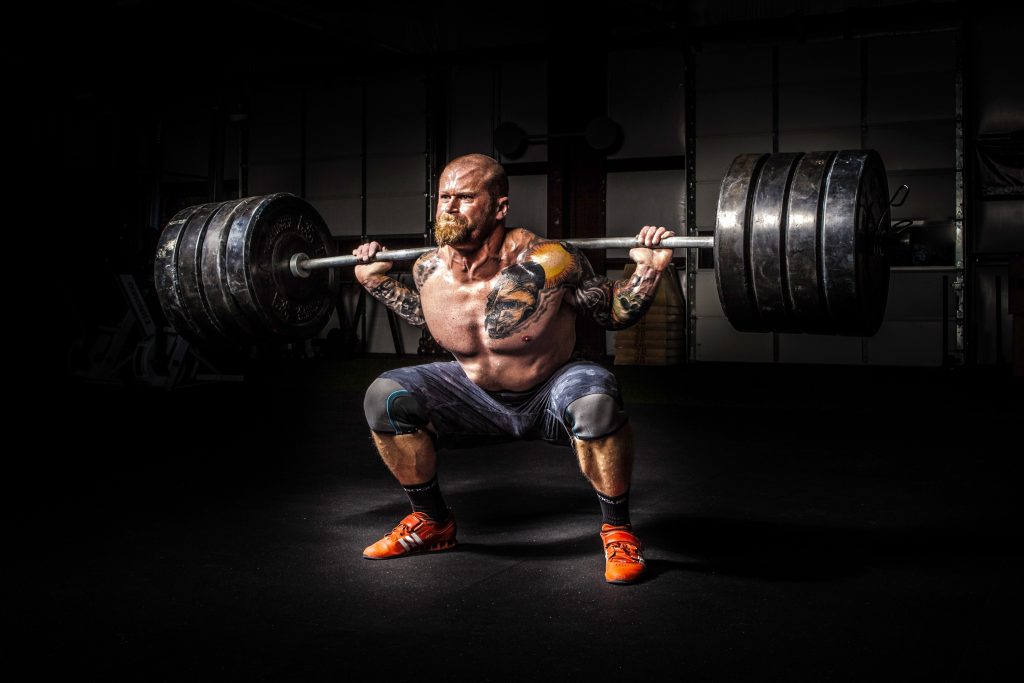Uncategorized
The Secret to Building Mass
Discuss this post in RPG FitGroup!

First off, I’d like to apologize for the lack of regular posts, lately. I’ve been sinking almost all of my time and energy into my new dojo/gym this summer, and unfortunately the blog and BaGC youtube channel have suffered for it. Things are calming down now, though, and we should be getting back to regular updates again. If you’re interested in how the new space is coming together, check out my daily vlog channel, The Best Dan Wallace!
This post is going to have a companion piece going live on Monday, as well, called “The Secret to Burning Fat.” If you’re a patron of mine on Patreon, you can go read it now!
Gaining muscle can be difficult for some people. There are a number of factors that can contribute to this difficulty, but the fact is that everyone is capable of putting on at least some muscle mass with the proper principles and methodologies. Yes, genetics can play a role in your upper limits, as can sexual hormones (hellooooo testosterone,) but barring certain very rare illnesses and conditions, almost everyone is capable of developing muscle mass. Again, it just comes down to following the right guidelines. What are those guidelines? I’m glad you asked!
Eat More Food
This is the first, most straightforward, and simplest principle. Note: simplest, not necessarily easiest. The fact is, if you’re not putting on weight (which you need to do in order to gain muscle mass,) you’re not eating enough food. Your body won’t put nutrients into making itself bigger if it’s not getting enough calories to overcome your daily metabolic requirements. That’s a simple, evolutionary principle, and it’s a good one, too, because it kept our ancestors from starving (and helped our more privileged ancestors produce more offspring.)
There’s a catch, though. Remember, simplest, not easiest. You need to consistently eat more than your total daily energy expenditure (TDEE) in calories every day. If you burn 2200 calories a day just existing, you need to eat 2500-2800 calories every day to gain weight. Eating 3000 calories one day and then going right back to 2200 isn’t going to produce any noticeable progress. This can be difficult to do if you aren’t used to having an enforced eating regimen. Frequently those who identify as “naturally skinny,” are just people who have relatively small appetites for their size, or are used to a habit of eating low calorie food a lot (vegetables, for instance.) This isn’t actually a bad thing, unless you’re trying to put on muscle.
Additionally, you need to be eating protein. A lot of protein. Recommendations vary depending on who you ask, but I stick to a principle of 0.8-1 gram of protein per pound of bodyweight, per day. If you’re obese, you can actually lower this to 0.5-0.7 (though this article is not aimed at people who are obese and looking to gain muscle, your best bet is to burn off your excess bodyfat first and see where you stand afterwards.) You can take in more protein if you want, but for me, putting away 160-190 grams of protein a day is enough work as it is!
Lift Weights
The fact is, to put on appreciable mass, you need to lift weights, preferably pretty heavy ones. Big, compound lifts like deadlifts, squats, and presses are best, as well as accessory work like curls, rows, and leg presses. We’re going to get into further principles of exercise in a second (as well as the science behind them,) but I want to make it abundantly clear, you will not see appreciable size gain without lifting weights. You can get plenty strong, athletic, and fit doing bodyweight routines, but for putting on mass, nothing beats lifting.
We’ve got some great lifting programs here on the blog, my particular favorites for mass gain are The Arthas Workout, The Marcus Fenix Workout, and The Master Chief Workout. You’ve also got the three Tank workouts (Juggernaut, Warrior, and Paladin) in the RPG Fitness eBook, if you’re ready to step your game up to the next level.
Consistency
This is something some people struggle with as well. I just listed six great workout programs, and if you follow any one of them, while also eating a lot of high protein food, you will gain mass. However, if you only work out once or twice every other week, and you switch between the six programs above every month or so, you’re never going to make real progress. Guess what? The guy in the gym doing squats and bench pressing with poor form and a weird set/rep configuration can still gain mass faster than someone with a perfect program, as long as he’s there more consistently. This is something you see all the time, in fact. There’s plenty of old-timey bodybuilder videos floating around where they’re performing exercises incorrectly, or with a weird program or weight configuration, and they’re still the size of trees. That’s because they literally live at the gym, performing those weird programs every single freaking day, and eating enough to feed a family of four. Steroids also help, of course, but I hate using those as an excuse for lack of consistency.
The fact is, if you’re not hitting the weights at least three times a week, you’re going to make slow (or no) progress.
Rest
To tag onto the end of that last point, rest is also important. Hitting the same muscle group hard without at least 24 hours to allow that muscle group to heal up is going to sabotage your progress, and it gets worse as you age (ah, to be 18 again…) Also, make sure you’re getting a solid 6-8 hours of sleep every night.
Persistence
Finally, this is, in many ways, the most important principle of all. You need to stick with it. If you’re just lifting weights for the first time, you most likely will not see much of a size increase in your first 3-6 months. Strength increase, sure, but probably not size increase (at least not a significant amount.) There’s a reason for this! When you’re telling your body to lift heavier weights, your body has two ways of accomplishing the goal you set before it. The first way, the one it will resort to first, is increasing your neuromuscular pathways.
Basically, when you’re starting out, you’re training your brain to communicate with your muscles better. The first time you do a deadlift, your brain is probably only recruiting 40-60% of the muscle fibers it could be using. The more you practice the deadlift, the better your brain gets at using more of your muscle fibers. Now, yes, the fibers you’re using will also gain some density, so you’ll see some size gain in this time, however your brains main method of forcing your body to generate more strength is just recruiting more of your muscle fibers to do it.
However, after your first 3-6 months of lifting, your brain stops running out of lazy muscle fibers to use. This is the point at which it resorts to its second method of getting stronger: increasing the size of your muscle fibers, also known as muscular hypertrophy. Basically, if you think of your muscle fibers as bungie cords, once your brain is able to use all the bungie cords you’ve got at your disposal, the only option it’s got to get stronger is to make the cords thicker. This, in turn, helps your muscles gain overall mass.
So, basically, if you’re looking to build mass, you need to be in this for the long haul. Did I oversimplify things? Yes, you’re going to be getting some size and neuromuscular efficiency all the time as long as you keep lifting (at least until you hit your genetic ceiling.) Do genetics and previous athletic experience play a role? Absolutely! However, the fact is, you need to be consistent and persistent if you want to get serious about putting on mass.
And that’s it! Your basic principles for building mass:
- Eat More Food
- Lift Weights
- Be Consistent
- Get Plenty of Rest
- Persist!
As mentioned above, just because it’s simple doesn’t mean it’s easy. But if you stick with the principles and stay on them as best you can, you will gain serious muscle mass!
I’ll see you again on Monday when we talk about the principles of how to burn off fat. Until then, as always, remember to live boldly, change the world, and continue to be awesome.





Don’t know if you’ve seen it yet but there’s an awesome game out called absolver. Fighting game, wholly melee combat, would make a really cool BAGC article I think.